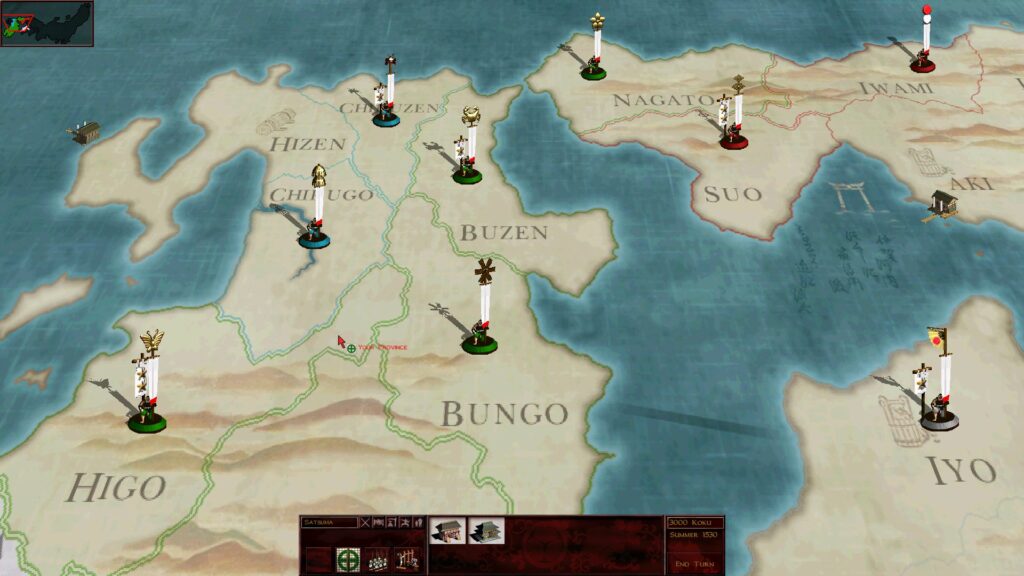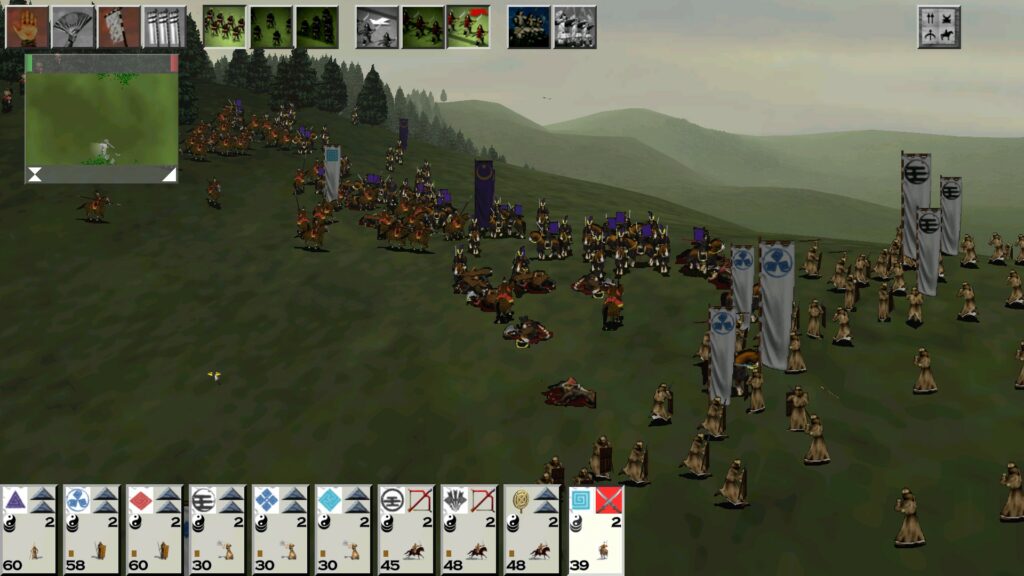
Reject modernity, return to SHOGUN: Total War in the Steam Summer Sale
The sun is shining. The heat is rising. The bathing suit skins are coming out for all our favourite videogames. The bees should, by all known laws of aviation, be unable to fly. That’s right, it’s Summer, making it the perfect time (particularly mid-pandemic) to barricade the doors and windows and take advantage of the Steam Summer Sale on the past and present of Total War games.
For the first few days of the sale, we’ll be highlighting some of our past titles, why they still hold up today, and what went into their development. We’re starting today with Executive Producer Mike Simpson (or The Big Boss, as I like to call him) talking about how it all started with SHOGUN: Total War.

For the uninitiated, could you explain who you are, what you do, and what your role on SHOGUN: Total War was back in the mists of time?
I’m the Executive Producer for the Total War series, the overall boss of the development teams. I joined Creative Assembly back in 1996 when there were five people working on sports games like Rugby and AFL.* The idea was to set up a new team in Singapore to work on an RPG based on Journey to the West. At the time the Singapore government was paying 50% of the cost of projects for new startups, and setting up there looked almost too good to be true.
After a few months of detailed investigations and planning it turned out it was – there were strings attached to the grants (very long strings) and staying in Horsham looked like a better option. The Journey game was going to be a long and ambitious project, so we looked for ways to fund it. At the time there were a lot of Command & Conquer clones being made and doing well. Games like KKnD.** That seemed much easier than Journey so we started looking at doing a quick and dirty B-grade C&C clone to make some easy cash.
Comparing the release version of SHOGUN to the initial plans, did much change over the course of development? Was the core of Total War always there?
It started as a top down traditional RTS, with its unique thing being large groups of ant-sized troops with flocking behaviours. This allowed us to set it in medieval Japan. At around this time the first 3D graphics cards were becoming affordable, but were mostly being used for interiors – flat surfaces and blocky objects. Curved surfaces were seen as way too expensive but our programmer, the legendary Anthony ‘Tag’ Taglione, figured out the maths to display a spline-based surface, and suddenly we had rolling hills running super-fast. It was an unexpected surprise.
That let us bring the camera down in to the general’s eyes and start to make the game look like a real battle, not just an animated map. At some point we decided to take the base building off the battlefield and making it a turn-based empire building strategy game. It just made much more sense with historical medieval content.
So, we didn’t start with the vision for the game and build from there. It was a series of false starts, discoveries and revelations. I’ve described this in the past as a ‘design by accident’ methodology that ended up leading us to the vision for the whole series.

Almost exactly 21 years later, what do you think still holds up?
The mixture of turn based strategy and real time battles and the core pillars: depth, authenticity, and scale still hold up. It’s really open to having fresh new gameplay elements plugged in to the existing framework, and from a content point of view there is no end in sight to the historical periods we want to cover or the licences we could take on. We have a long, long list and argue not over what we want to do, but over the order we do it in.
We give you a Creative Assembly brand time machine and let you go back to the late ‘90s – what do you change about SHOGUN?
Well obviously, I’d include an encrypted file full of winning lottery numbers and investment picks, and the plans for the time machine. Oh, and dates for dearly departed friends and family to go and get checked for cancer. And a warning about the pandemic.
But for the game the one element I’d probably change is the throne room. It was a spliced prerendered video representation of diplomats coming into the Daimyo’s throne room and delivering their message – a very fancy replacement for a text box. It cost 25% of the whole project budget. The rendering tools & tech of the day weren’t really ready for real time compositing of large numbers of disparate 3D scenes, and we had huge trouble with keeping lighting constant and the embryonic cloth tech. After rendering a scene for days we’d find lighting would pop and the cloth simulation hadn’t settled down. It often looked like the diplomat’s trousers were full of eels.
Don’t kill the eels, Mike. Diplomat trouser-eels are endangered. But thanks for joining us anyway.

How about you, reader? Have you been with us since the start? Is SHOGUN a part of you as it is a part of CA, or are you a newer entry to our humble series? Were you to have a desire to scroll back through time to 2000 (and, by extension, medieval Japan), you can do so on Steam at 75% off, making it around the price of a particularly crap cup of coffee. Probably keep you awake for longer, too. Naturally, that comes with the Mongol Invasion expansion in one package.
We’ll have much more from our old titles over the next week or so as we highlight a few of the gems in our collection. You don’t have to wait of course, and the full Total War franchise is now on sale. Anything and everything from our back catalogue has had a discount, whether you’re interested in cannon, rat, gladius, or the Three Kingdoms.
*Don’t know about our glorious sports-based history? Wikipedia to the rescue.
**Editor’s note: KKnD 2: Krossfire absolutely slapped when I was 12 or whatever.